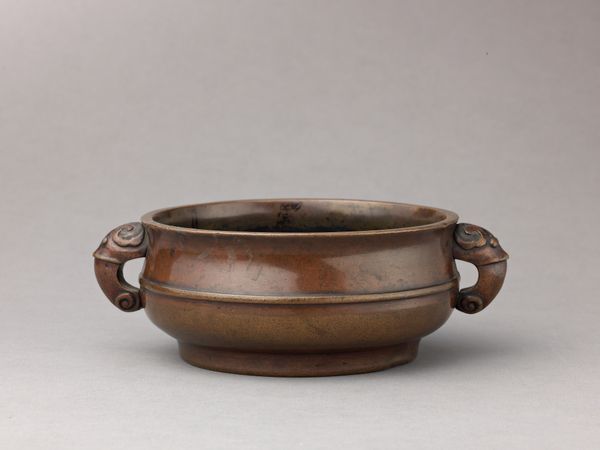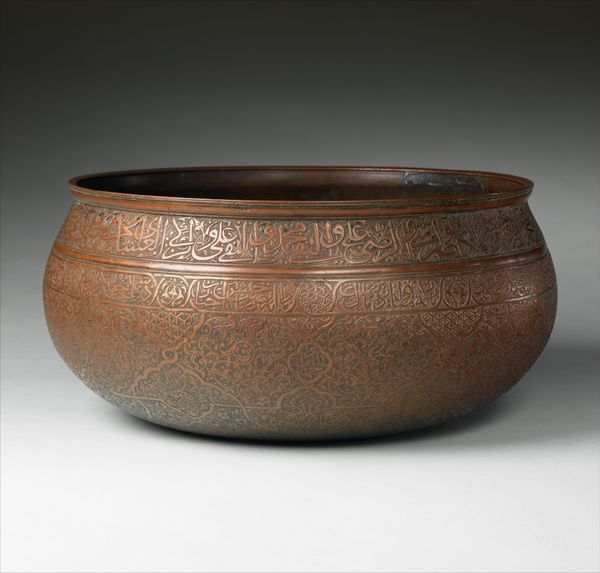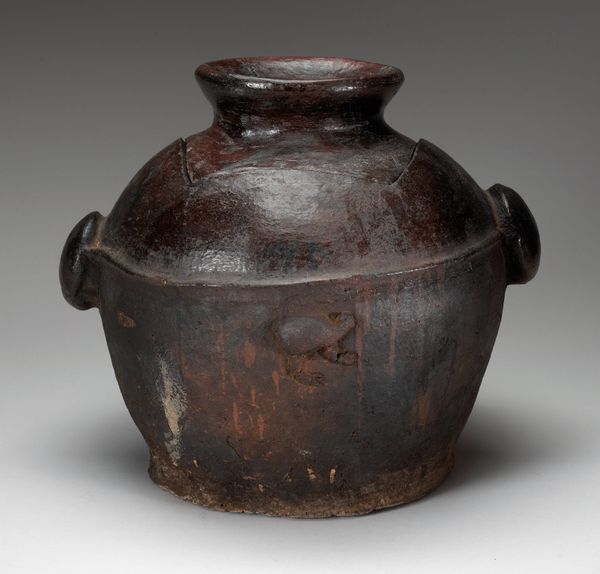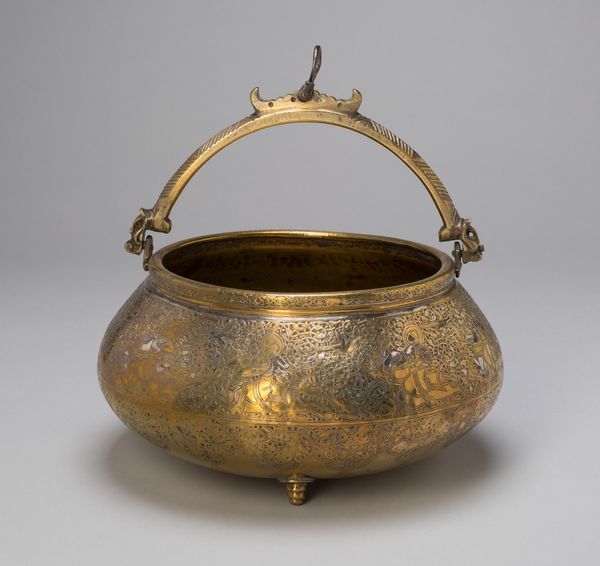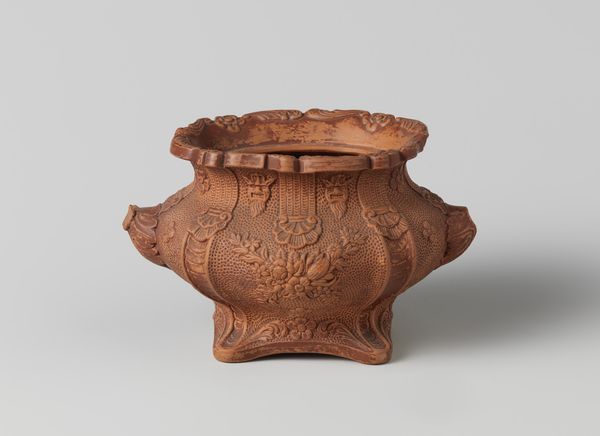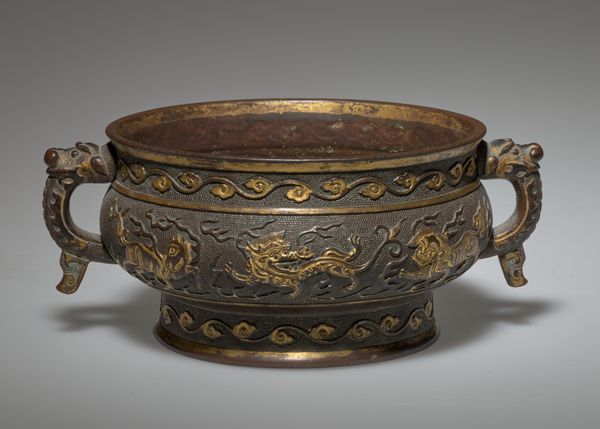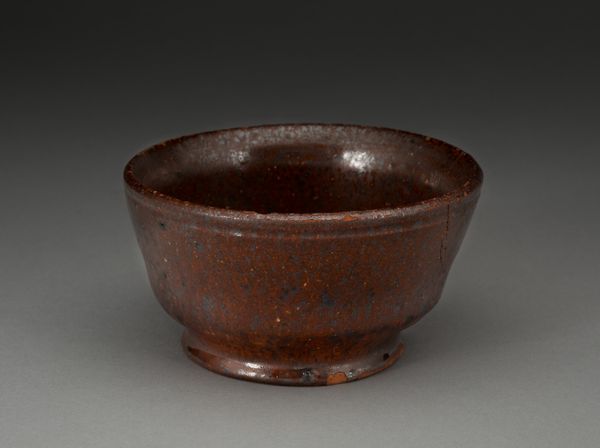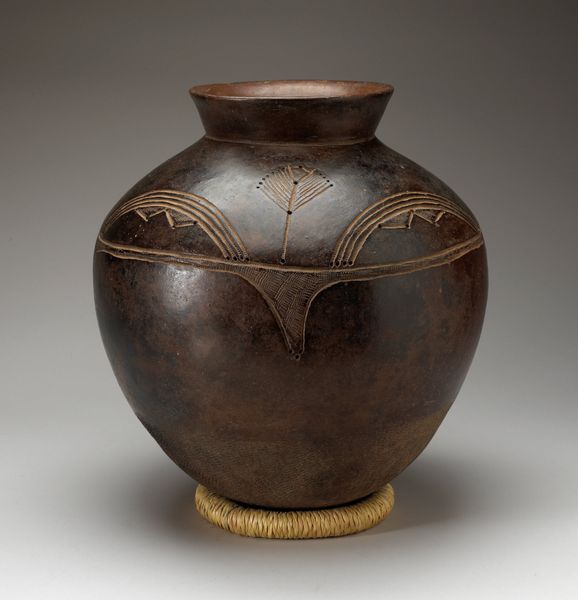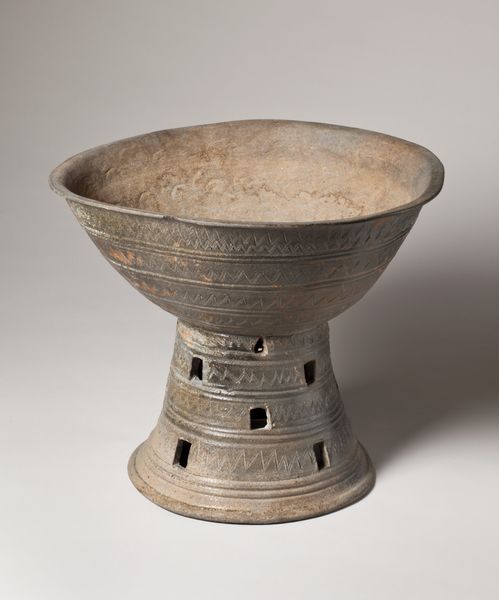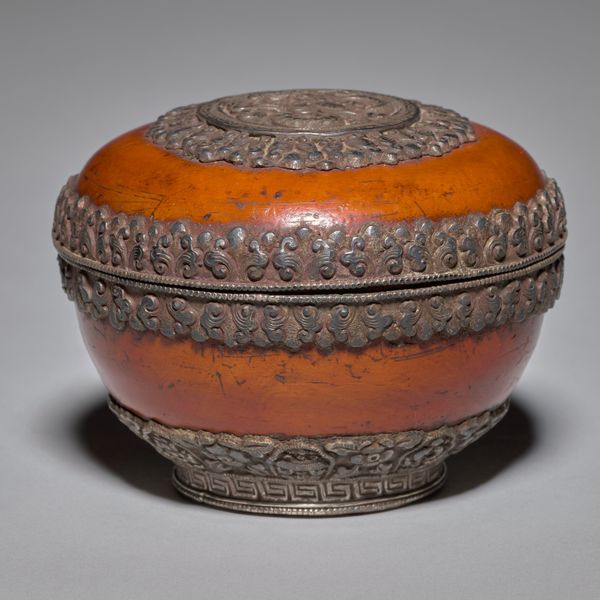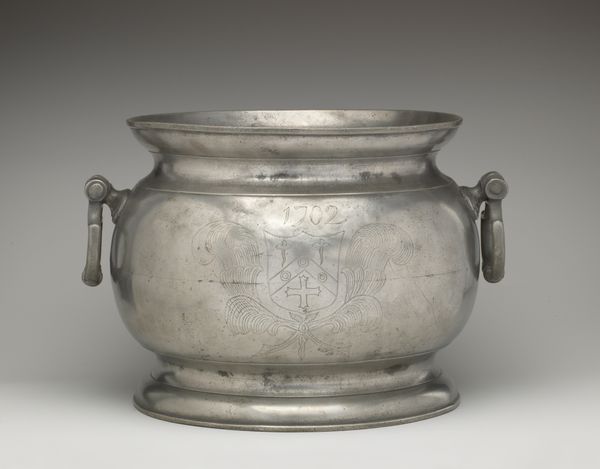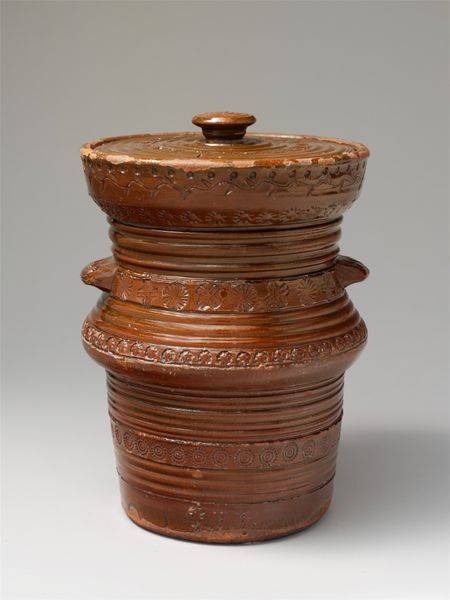
ceramic, earthenware
#
ceramic
#
earthenware
#
stoneware
Dimensions: height 25.2 cm, diameter 36.5 cm
Copyright: Rijks Museum: Open Domain
Curator: Looking at Willem C. Brouwer’s ceramic pot from between 1899 and 1925, made of earthenware, one is immediately struck by its simple, almost primal form. Editor: My initial reaction is its heft and color, that warm, earthy glaze suggests age and grounding, despite the vessel's rather diminutive size. Curator: It’s interesting that you mention grounding. This phrase "Oost West Thuis Best" encircling the top translates to "East West Home’s Best," touching on themes of belonging, home, and perhaps, a critique of colonialism as Brouwer likely encountered it. Editor: Precisely, the inscription immediately grabs your attention and structures the upper register; then the repetitive patterns create this rhythm that anchors your eye as it circles the pot. The dark, glossy finish has such tactile appeal; you just want to touch it. Curator: This earthenware speaks volumes about class and domesticity too. Consider the history of who creates such vessels, for what purpose and under what economic conditions. Such a vessel is never neutral; it represents labour, gender, trade, empire... all wrapped into one pot. The imagery stamped around the body—the deer in an oval frame— what narratives might it suggest regarding Dutch identity and nature? Editor: While context provides essential insight, let's consider how form and symbol coalesce. The curvature of the bowl feels ancient, archetypal almost, while the repeating decorations – the deer encircled by a cartouche -- suggest an intention for domestic embellishment but contrast with the rudeness of the pottery. Curator: These deer and inscription subtly echo narratives from folk tales to colonial ideologies, whispering to us about how ideas about nation and home are literally shaped into the things we use every day. How power relations trickle down into something as seemingly banal as a flowerpot. Editor: I concede. It’s that tension, between the idealized inscription and somewhat humble production values, that is the most provocative element. This simple form reveals very complex networks of signification, indeed. Curator: Exactly! Seeing the familiar in unexpected contexts is one step towards dismantling long-held assumptions. Thank you. Editor: The pleasure was all mine.
Comments
No comments
Be the first to comment and join the conversation on the ultimate creative platform.
